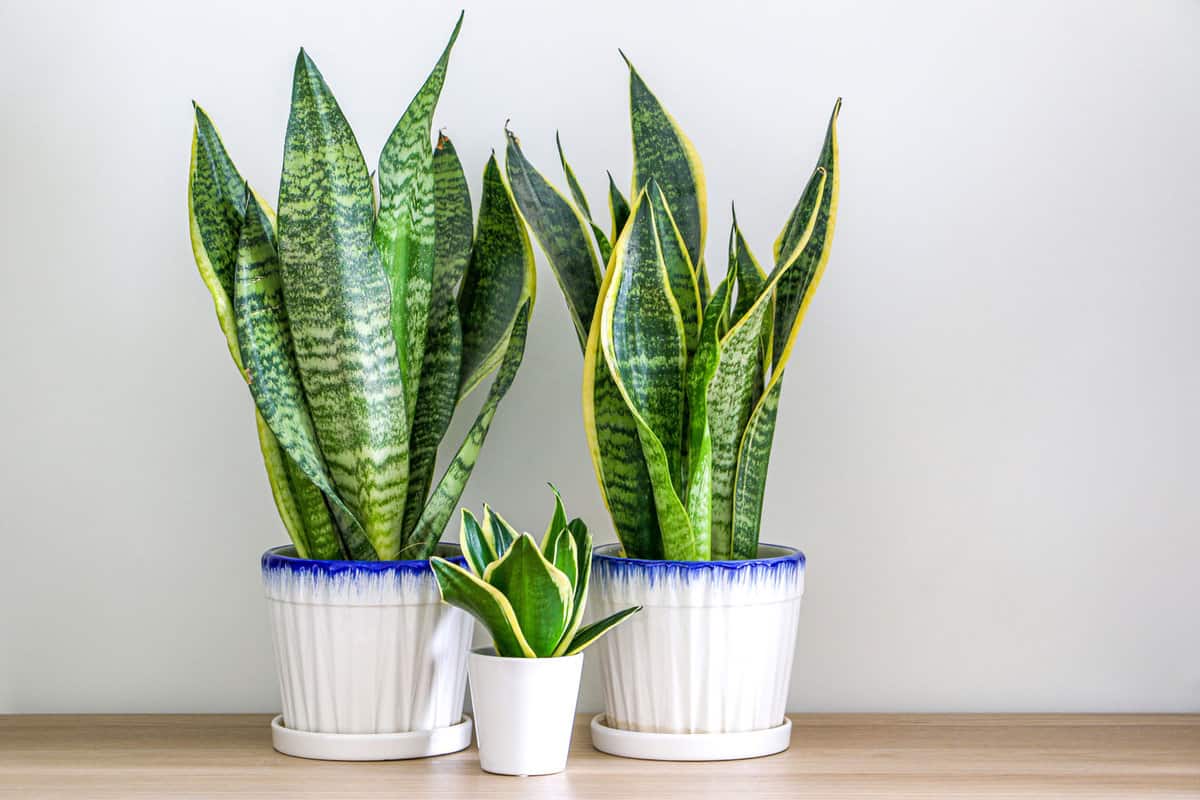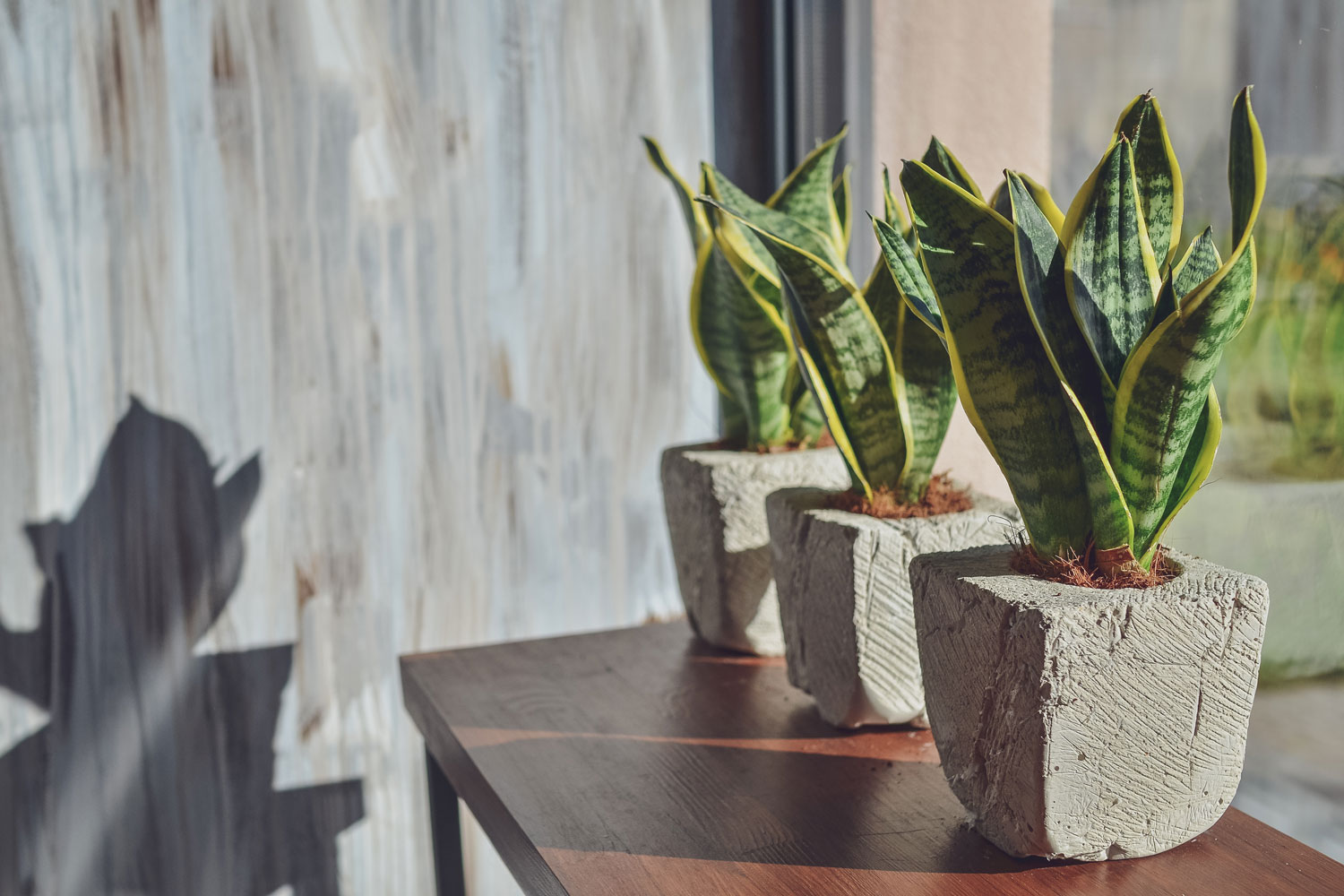Are you looking for a low-maintenance houseplant that looks great and offers a range of health benefits?
Then, you don't have to miss the snake plant! This hardy plant is a popular choice for gardeners thanks to its easy care requirements and ability to thrive in various indoor environments.

But did you know there are some unexpected benefits to having a snake plant in your home?
For example, this plant is an adequate air purifier, helping to remove harmful toxins from the air and create a healthier living space.
Did you know it can also improve mental health and productivity?
Surprising, right? Keep reading to discover more benefits of having a snake plant in your home!
What is a Snake Plant?
The snake plant, scientifically known as Sansevieria trifasciata, is a widely recognized and cherished indoor plant.
Its distinctive appearance has earned it several nicknames, including "mother-in-law's tongue" and "viper's bowstring hemp."

The latter moniker is derived from the plant's historical use in making bowstrings and the pointed, sword-like shape of its leaves.
Native to tropical regions of Africa, the snake plant has adapted remarkably well to indoor environments worldwide.
Its resilience and low-maintenance nature make it a favorite among both experienced and novice plant enthusiasts.
The plant's leaves are its standout feature, typically ranging from dark green to variegated patterns with yellow or white stripes, creating an appealing aesthetic.
Boosting Air Quality
Having a snake plant in your home can improve the air quality. Snake plants are known for producing oxygen and removing toxins from the air.
Let's take a closer look at how they achieve this.
Oxygen Production
During the day, snake plants absorb carbon dioxide and release oxygen like any other plant in photosynthesis.
However, what sets them apart is their ability to continue producing oxygen even at night, thanks to a process called Crassulacean Acid Metabolism (CAM).
This makes them a great addition to your bedroom since they can help improve the air quality while you sleep.
Toxin Removal
Snake plants are also effective at removing toxins from the air. They can absorb pollutants, including formaldehyde, benzene, and xylene.
This makes them an excellent choice for anyone looking to improve the air quality in their home, especially in the bedroom!
To get the most out of your snake plant, keep it in a well-lit area and water it sparingly. Overwatering can lead to root rot, which can kill the plant.
Improving Mental Health
In the hustle and bustle of modern life, stress is an unwelcome companion that often overstays its welcome.
Fortunately, nature has given you a simple yet effective antidote - the humble snake plant. As stated, it is renowned for releasing oxygen at night; the snake plant is a breath of fresh air, quite literally!
Moreover, studies have discussed the psychological and physiological advantages of interacting with indoor plants. It demonstrated a noticeable reduction in stress levels among individuals who surround themselves with greenery.
Increasing Productivity
Did you know that indoor plants can help increase your productivity?
Studies have shown that employees who work in offices with plants are up to 15% more productive than those without plants.
For instance, it's suggested that surrounding your workspace with snake plants can ramp up productivity and enhance memory, aligning with the broader theme of indoor plants promoting a conducive work environment.
If these benefits are observed in the workspace, wouldn't they also extend to your homes, right?
Enhancing Home Decor
A snake plant is an excellent addition to any home decor. Not only does it bring a natural aesthetic to your living space, but it also helps to increase the efficiency of your room.
Here are some ways in which a snake plant can enhance your home decor:
Natural Aesthetics
Snake plants have long, slender leaves that come in shades of green. The leaves grow tall and straight, making them a perfect addition to any empty corner of your room.
They can also add a touch of greenery to your bookshelf or coffee table. Snake plants are versatile and can be arranged differently to suit your style.
Space Efficiency
Snake plants are great for small living spaces. They don't take up much room and can be placed in any corner of your room.
They can also be used to divide a large room into smaller sections. For example, you can arrange a snake plant between your living room and dining area to create a natural partition.
Easy Maintenance
If you are looking for a low-maintenance houseplant that can survive in almost any condition, then the snake plant is the perfect choice. Here are some tips to help you maintain your snake plant with ease.
Watering Schedule
One of the most significant advantages of having a snake plant is that it doesn't require frequent watering. Overwatering can be detrimental to its health.
You should water your snake plant only when the soil is ready. This will help prevent root rot and other fungal diseases.
Light Requirements
Another great thing about snake plants is that they can tolerate a wide range of light conditions.
They can thrive in bright, indirect, and low-light conditions. However, they prefer bright, indirect light for optimal growth.
If your snake plant is not growing well, it might be due to insufficient light. In that case, you can move it to a brighter spot. But be careful not to expose it to direct sunlight as it can scorch the leaves.
Wrapping Up
It's crystal clear that the snake plant is more than just a decorative piece.
Its low-maintenance nature and ability to thrive in various indoor environments make it a coveted choice among plant enthusiasts.
The aesthetic appeal of its long, slender leaves is undeniable, but the plant's health and productivity-boosting attributes genuinely make it shine!

